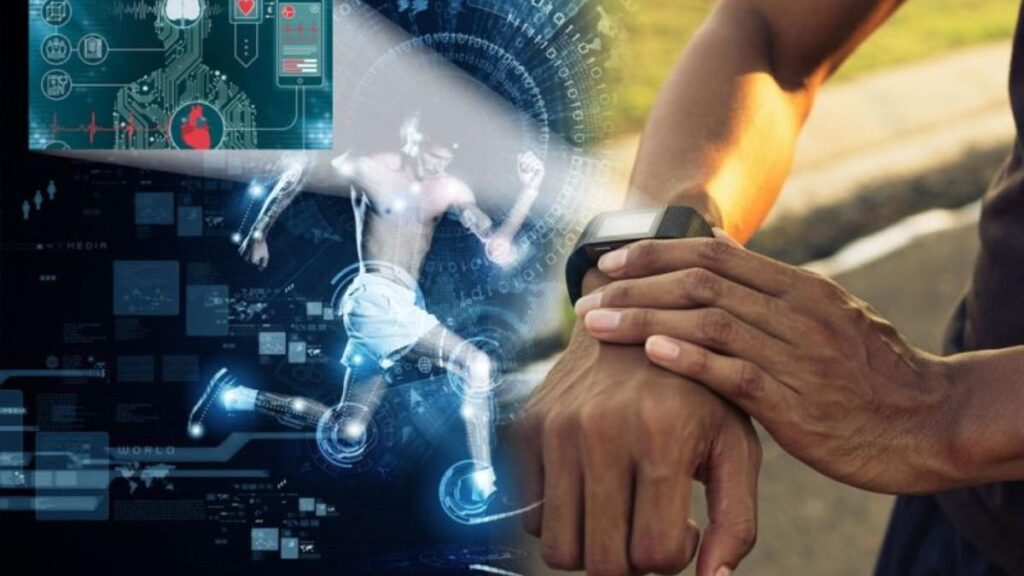The Rise of Wearable Health Technology: A Revolution in Personal Health and Wellness

By Col (Dr) Surendra Ramamurthy (Retd.) MBBS, MD, DNB, FICS
Introduction
In our rapidly evolving digital age, wearable health technology has emerged as a game-changing innovation, redefining how we interact with our personal health. This transformation has rendered medical grade monitoring accessible to the general public and placed a plethora of wellness tools at our fingertips. In this in-depth exploration, we will examine the multifaceted ways wearable health technology is revolutionizing healthcare, from monitoring vital signs to chronic disease management and beyond.
Monitoring Vital Signs: More Than Just Numbers
One of the pioneering features of wearable health technology is its ability to provide continuous monitoring of vital signs. Devices can now meticulously track key health metrics such as heart rate, blood pressure, and body temperature. But these aren’t just static numbers on a screen; they are dynamic, real-time indicators of one’s overall health. This information serves as a critical early-warning system, alerting users to irregularities that may warrant medical attention. Immediate access to these data streams offers unprecedented insights, allowing users to take timely action and avoid the escalation of potential health issues.
Fitness and Activity Tracking: A Personalized Coach on Your Wrist
While fitness trackers initially gained fame for counting steps, their role has significantly evolved. Modern wearable devices function almost like personalized health coaches. They not only measure distances covered but also estimate calorie burn, evaluate the impact of aerobic activities, and even offer guided workout sessions. By giving users immediate feedback and tangible goals, wearables instigate a behavioural change, encouraging more physical activity and healthier lifestyle choices.
Sleep Tracking: Deciphering the Mysteries of Rest
Sleep is often the overlooked cousin in the family of health metrics, but wearables are making it easier to track this vital aspect of well-being. These gadgets meticulously monitor sleep duration, sleep stages, and even the quality of sleep through metrics like restlessness and respiration rate. This data empowers users to understand their sleep patterns better and make informed adjustments, such as modifying bedtime habits or room conditions. As a result, wearables are becoming instrumental in helping users manage sleep-related issues and improve overall health.
Chronic Disease Management: A Lifeline for Sustained Care
The utility of wearables isn’t limited to fitness and wellness; they are becoming indispensable tools in managing chronic conditions like diabetes and hypertension. Advanced devices can monitor glucose levels around the clock, administer insulin doses, or even alert healthcare providers if an intervention is required. This continuous monitoring and data collection provides an invaluable resource for both patients and clinicians, allowing for real-time adjustments to treatment plans and contributing to more effective disease management.
Telemedicine and Remote Monitoring: Bridging the Distance
One of the watershed moments in healthcare has been the integration of telemedicine with wearable health technology. Remote patient monitoring is no longer a futuristic concept but a present-day reality. Healthcare providers can access a patient’s vital signs and other metrics in real-time, eliminating the need for frequent in-person visits and making healthcare more accessible, particularly for those in remote areas.
ALSO READ | Planning an Eye Surgery? Important Guidelines to Follow For Eye Surgeries During Conjunctivitis Outbreak
Medication Management: An Organized Approach
Managing multiple medications can be a complex and sometimes overwhelming task, particularly for the elderly or those with chronic conditions. Wearables offer a simple solution by sending timely reminders and even tracking adherence to medication schedules. This feature is proving to be invaluable for ensuring effective treatment and minimizing the risk of complications due to missed doses.
Stress and Mental Health: Beyond the Physical
Mental well-being is finally getting the attention it deserves, thanks in part to advancements in wearable technology. Newer devices have features that can monitor stress levels through heart rate variability, offering immediate coping strategies like guided breathing exercises and relaxation techniques. These functionalities are creating a more holistic approach to health, addressing both mental and physical aspects.
Personalized Health Insights: Data-Driven Wellness
The volume of data that wearables can generate is staggering. When processed through advanced analytics and artificial intelligence, this data transforms into personalized health insights. Wearable devices can offer lifestyle recommendations, suggest workout adjustments, or even predict potential health risks, all tailored to the individual user’s health profile.
Preventive Health: Shifting the Focus from Treatment to Prevention
The continuous nature of data collection from wearable devices facilitates a proactive approach to health management. By identifying trends and anomalies early, individuals can take preventive measures before conditions become critical. This is particularly beneficial for high-risk demographics, making it easier to manage health outcomes effectively.
Health Ecosystem Integration: The Sum is Greater than its Parts
Wearable health technology doesn’t exist in isolation; it’s part of a broader, interconnected health ecosystem that includes smartphones, smartwatches, and specialized health apps. This integrated system offers a comprehensive overview of a user’s health status, making it easier to coordinate care and share data among healthcare providers, thus enhancing the efficiency and effectiveness of healthcare delivery.
User Empowerment: Becoming the Captain of Your Health
The empowerment offered by wearable health technology is perhaps its most transformative aspect. The ease of access to health metrics and the ability to monitor them in real-time allows individuals to take an active, informed role in their wellness journey. The technology serves as both a motivator and a facilitator, enabling a new level of self-care that was previously unattainable.
Accessibility and Affordability: Democratizing Health Monitoring
As technology continues to advance, the cost of wearable devices is steadily decreasing, making them accessible to a broader population. Affordable wearables have the potential to level the playing field in healthcare, especially in regions where medical facilities are scarce or expensive.
Research and Public Health: Contributing to the Bigger Picture
Finally, the data aggregated from wearables isn’t just beneficial for individual users; it has significant implications for public health as well. Researchers can utilize this wealth of data to study trends, identify public health risks, and even develop targeted interventions. In this way, wearable health technology contributes to the broader healthcare landscape.
Conclusion
Wearable health technology is not merely a trend; it’s a revolution that is reshaping the very foundations of healthcare. From proactive monitoring of vital signs to intricate chronic disease management, these devices are proving to be indispensable tools for modern healthcare. Their impact extends beyond individual well-being, contributing to broader public health initiatives and revolutionizing our approach to healthcare. As these devices become more integrated, affordable, and advanced, their potential to empower individuals and transform healthcare systems globally will only continue to grow.









